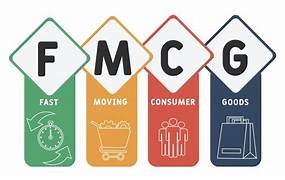Introduction:
The Fast Moving Consumer Goods (FMCG) industry represents a dynamic and vital segment of the global economy. FMCG companies operate in a fiercely competitive environment, marked by rapidly changing consumer preferences, technological advancements, and market trends. Analyzing the industry through a SWOT (Strengths, Weaknesses, Opportunities, and Threats) lens offers valuable insights into its internal dynamics and external landscape, assisting companies in making informed decisions and fostering sustainable growth.

Strengths:
One of the standout strengths of the FMCG industry is its agility in responding to consumer demands. FMCG companies excel in innovation, continuously introducing new products and variations to meet evolving tastes and preferences. Additionally, their extensive distribution networks enable them to reach both urban and rural markets effectively, bolstered by strong brand recognition and customer loyalty. These factors collectively consolidate the industry’s position, fostering trust and encouraging repeat purchases.
Take a look at the below blog the Benefits of swot analysis for Your Business
https://ediify.com/the-benefits-of-swot-analysis-for-your-business/
Weaknesses:
However, the FMCG industry faces several weaknesses that demand attention. Intense competition and slim profit margins pose significant challenges, with companies under constant pressure to differentiate their offerings while maintaining competitive pricing. Furthermore, reliance on external factors such as raw material costs and supply chain disruptions adds complexity to operations. Economic downturns and fluctuating consumer spending patterns further underscore the need for robust risk management strategies within the industry.
Opportunities:
Despite challenges, the FMCG industry presents numerous opportunities for growth and expansion. Rising disposable incomes, particularly in emerging markets, create a burgeoning consumer base eager to explore new products and experiences. Moreover, digitalization has revolutionized marketing and distribution channels, providing innovative avenues for companies to engage with consumers and streamline operations. The increasing focus on health and sustainability also presents opportunities for companies to capitalize on the demand for organic, eco-friendly, and ethically sourced products.
Threats:
In the midst of opportunities, the FMCG industry must remain vigilant against potential threats that could undermine its stability and profitability. Intensifying competition, driven by the emergence of niche players and private labels, poses a significant challenge to established brands. Additionally, economic uncertainties, geopolitical tensions, and regulatory changes introduce further complexity, impacting supply chains and market dynamics. Shifting consumer preferences towards healthier alternatives and premium products also poses a challenge to traditional FMCG offerings, necessitating adaptation and innovation to remain competitive.
Conclusion:
In conclusion, the FMCG industry navigates a complex landscape characterized by a balance of opportunities and challenges. Utilizing a comprehensive SWOT analysis equips companies with the tools to leverage strengths, mitigate weaknesses, capitalize on opportunities, and navigate threats effectively. By fostering innovation, investing in research and development, and cultivating agility, FMCG companies can position themselves for sustained growth and competitive advantage in an ever-evolving market environment. As consumer behaviors continue to evolve and global trends reshape the industry, adaptability and strategic foresight remain critical for success in the FMCG sector.



